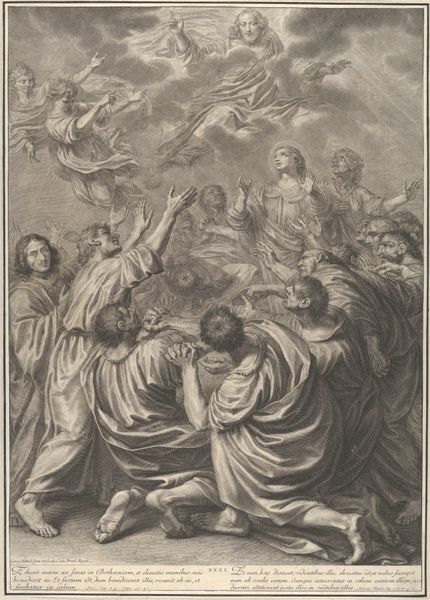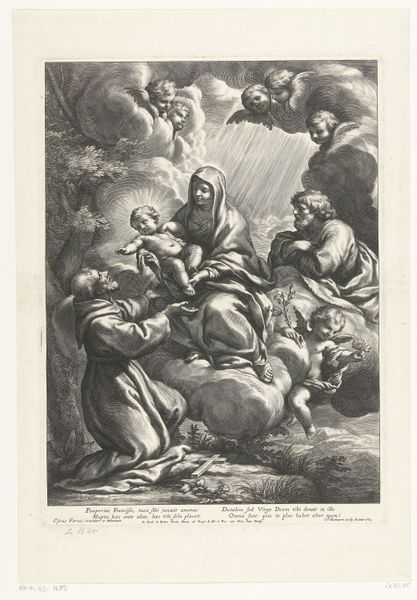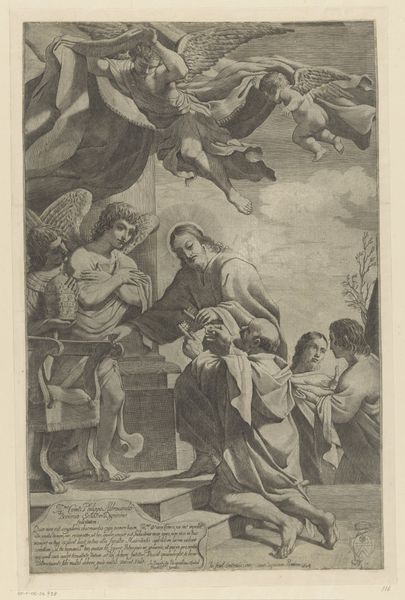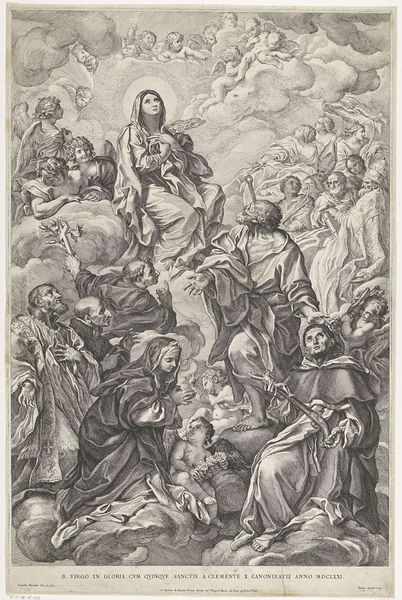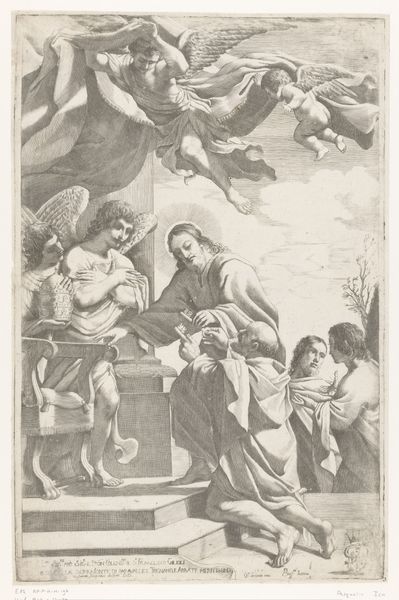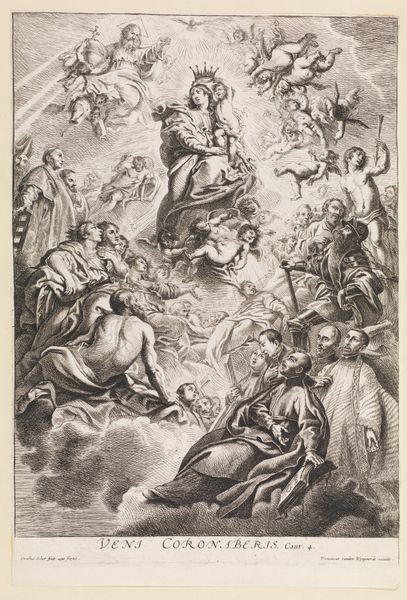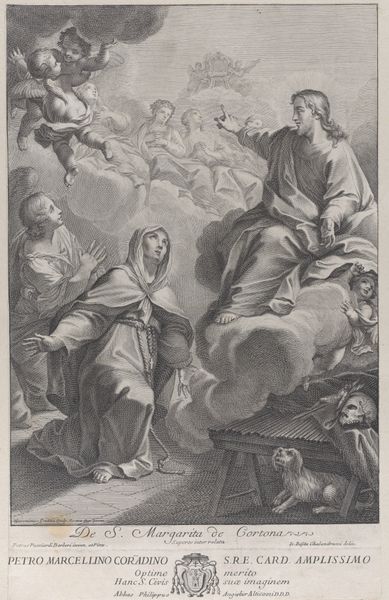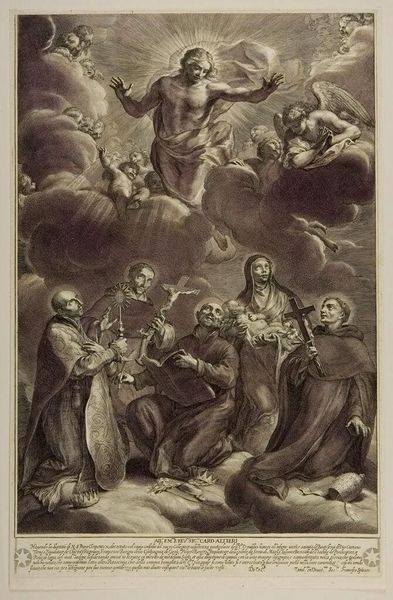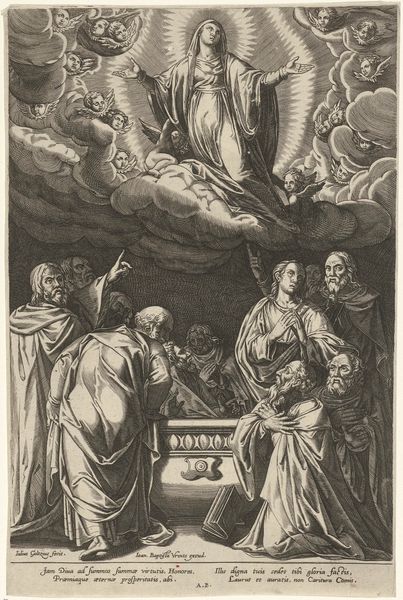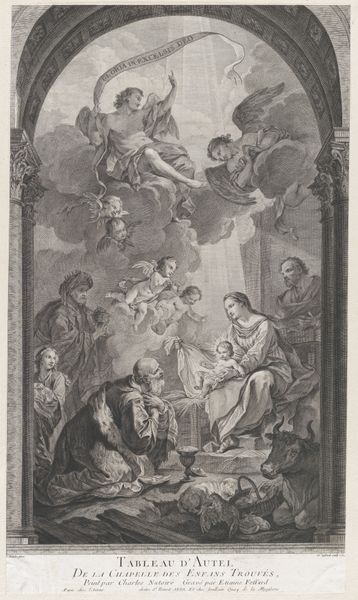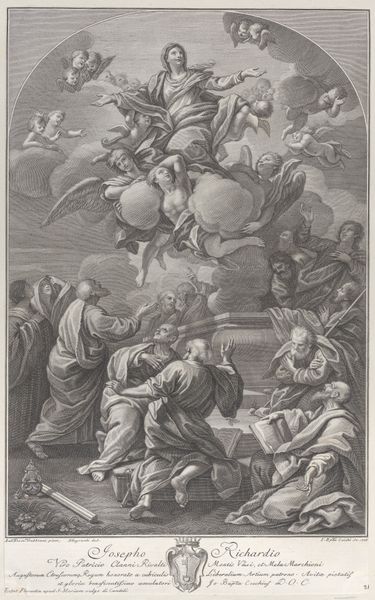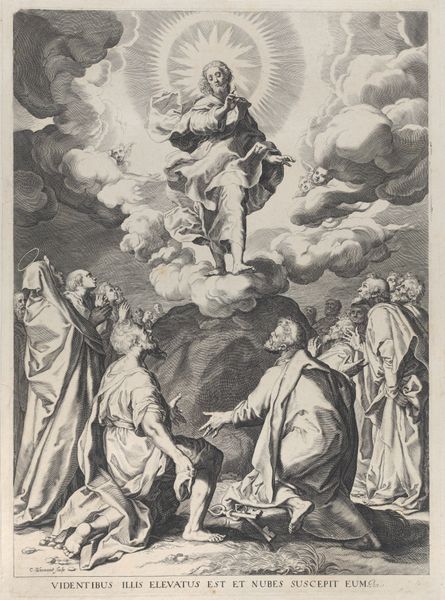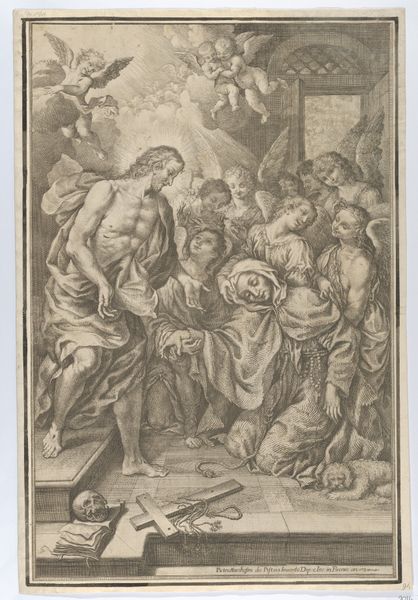
Five saints kneeling and adoring Christ: Saint Francis Borgia, Saint Louis Bertrand, Saint Cajetan, Saint Rosa of Lima, and Saint Philip Benzi 1666 - 1676
0:00
0:00
drawing, print, engraving
#
drawing
#
baroque
# print
#
figuration
#
history-painting
#
engraving
Dimensions: Sheet (Trimmed): 18 3/4 × 12 1/16 in. (47.7 × 30.7 cm)
Copyright: Public Domain
Curator: This is "Five Saints Kneeling and Adoring Christ," an engraving dating from between 1666 and 1676 by François Spierre. Editor: It’s striking how the artist used light and shadow; that contrast immediately grabs you. It's got this otherworldly, dramatic flair typical of the Baroque era. The sheer volume of figures feels almost overwhelming, doesn't it? Curator: Precisely. The composition leverages a clear hierarchical structure: Christ dominates the upper register, surrounded by angels and bathed in divine light, while below, five saints—Francis Borgia, Louis Bertrand, Cajetan, Rosa of Lima, and Philip Benzi—are arranged in a semi-circle, united in devotion. Notice the linearity, typical for engravings, how that contrasts with the billowing, almost operatic cloud formations. Editor: The symbolism is quite dense. Each saint carries emblems that point to their life, works, and particular spiritual attributes. It makes one consider the emotional resonance of sainthood during that era; were they examples of piety, intended to inspire or perhaps elicit feelings of guilt and awe? Curator: It delves deeper. The arrangement subtly orchestrates visual narratives around redemption and divine grace. Each element within the pictorial space relates through form and association, not just illustrative function. Observe how Spierre used light not just to highlight, but to create a sense of spatial depth. The stark lines, combined with strategic shading, construct this divine landscape with great intention. Editor: You're right, the medium itself reinforces that intentionality. As an engraving, the precision emphasizes theological doctrine while using dramatic visual language, aiming to shape how viewers interpret sanctity. The halo effects are less about literal representation, more about invoking specific theological feelings. Curator: I find myself considering how effective it is. To what degree did its formal choices enable specific devotional experience? And how does this relate to its cultural milieu and patronage? Editor: Pondering the relationship between form and spiritual function is vital. Ultimately, Spierre's decisions offer insight into that period’s complex ways of seeing—both worldly and divine. Curator: I concur; revisiting works like these reminds us of the sheer effort to visually translate faith during times of intense change and conflict.
Comments
No comments
Be the first to comment and join the conversation on the ultimate creative platform.
